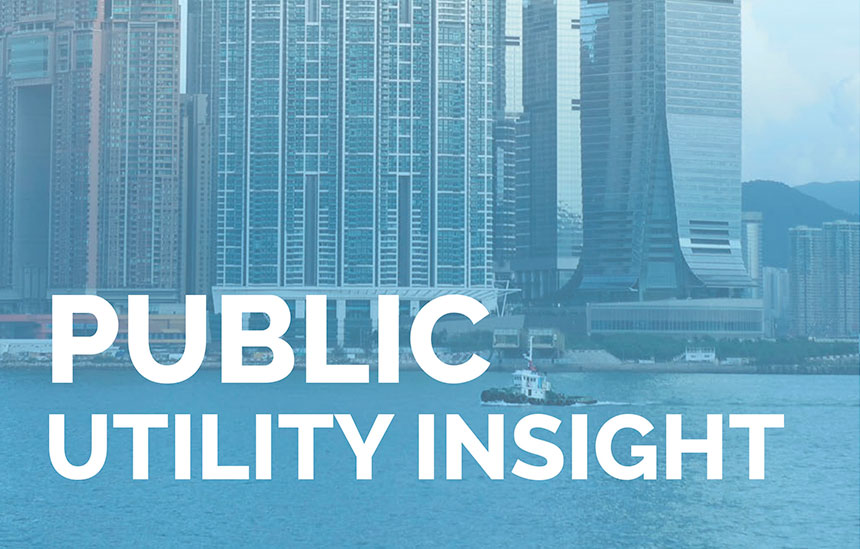Published on IDRA Global Connections Spring 2020 Issue
By Mr. Tim Lam Shing
Reliable and quality water supply is indispensable to the livelihood of the people in Hong Kong and is critical to the territory’s sustainable
developments. The Water Supplies Department of the Hong Kong Special Administrative Region Government (“WSD”) is charged with the
responsibility of maintaining reliable and adequate supply of quality water to the population of about 7.5 million (figure in in 2019).
Currently, local yield collected in catchment areas of the 17 impounding reservoirs accounts for about 20% to 30% of Hong Kong’s total fresh
water consumption. The remaining portion of our raw water supply comes from Dongjiang in Guangdong, China.
Since 2008, WSD has been promulgating the Total Water Management Strategy (“Strategy”) to ensure water security and support sustainable developments in Hong Kong. The Strategy focuses on two major areas, namely water demand management and water supply management.
In 2019, we have completed a review on the Strategy. The review updated the forecast of water demand and supply methodologies and projections up to 2040, taking into account impacts of climate change. The updated Strategy adopts a two-pronged approach, with emphasis on containing fresh water demand growth and building resilience in the fresh water supply to cater for extreme effects of climate
change with diversified water resources.
The key initiatives of containing fresh water demand include further promotion of water conservation, water loss management and expansion of the use of lower grade water for non-potable purposes. With these initiatives, we anticipate the growth of fresh water demand will be contained and maintained at around the current level of around 1,000 million cubic metres per year.
On the other hand, in view of the possibility that the local yield may decrease substantially due to climate change, and to ensure that water
supplies remain secure, we make concerted efforts to exploit new water sources by means of technologies such as desalination, water
reclamation, grey water reuse and rainwater harvesting.
The construction of the first stage of desalination plant in Tseung Kwan O in the eastern part of Hong Kong has already commenced in late-
2019. The plant will adopt reverse osmosis technology to produce potable water from seawater with a water production capacity of 135 000 cubic metres per day, which will meet around 5% of total fresh water consumption in Hong Kong. Upon its expected completion and commencement of operation in 2023, the plant will provide a strategic alternative water resource which is not susceptible to climate change.
Moreover, WSD has been working towards supplying reclaimed water, converted from tertiary treated sewage effluent, for non-potable uses to Sheung Shui and Fanling in the northeastern part of Hong Kong from 2022 onwards. The supply of reclaimed water is estimated to save Hong Kong about 21 million cubic metres of fresh water each year.
Furthermore, we will construct a centralized grey water recycling system treating grey water collected from inhabitants at the Anderson Road Quarry development site for flushing use. The government has also been promulgating guidelines on implementation of rainwater harvesting and grey water recycling systems for new government buildings for non-potable applications.
Apart from exploiting new water sources, WSD has also been extensively supplying seawater for flushing since the late 1950’s. WSD will
continue to extend the use of seawater for flushing to reduce fresh water demand.
Even with these measures in hand, we have to prepare for the worst, we have to ensure that we have the capabilities to overcome unpredictable impacts of climate change and any unforeseen circumstances. We have thus formulated a list of backup options to tackle worse-than-expected situations, for example, expansion of storage capacity of impounding reservoirs and further implementation of desalination plants. We can never afford complacency and will continuously monitor the water demand and supply situation, and take appropriate actions as necessary.
About the Author: At present, Mr. Shing is currently the Chief Engineer of the Consultants Management Division under the New Works Branch of the Hong Kong Water Authority, managing various waterwoks projects worth of total value about HK$ 30 billion from water mains replacement and rehabilitation, expansion of existing water treatment works to a district-based grey water recycling system and the Tseung Kwan O seawater desalination plant using reverse osmosis of capacity 135 million litres per day with provision for future expansion to 270 million litres per day.

